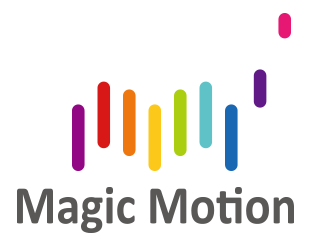Introduction
Here, "types" refers to "which body part serves as the main source of the orgasm." Generally, the path to orgasm involves directly stimulating a specific sensitive area or erogenous zone. However, it’s worth noting that this article focuses on orgasms rather than ejaculation, which will be discussed in detail later.
Clitoral Orgasm
The clitoris is the maximum sexually touchy a part of the body for most people who have one. It’s positioned on the top of the vulva, where the upper part of the labia meet, and is situated above the urethral and vaginal openings. Although it seems tremendously small from the outside, its internal shape is a whole lot larger, resembling a “wishbone” that surrounds the vagina on both side. Small yet powerful, the clitoral surface is packed with thousands of nerve endings.
The clitoris is extremely sensitive, and stimulating it without sufficient arousal or lubrication can cause discomfort or even pain. Furthermore, each person’s clitoral preferences differ; some may enjoy indirect contact or prefer to avoid direct contact altogether. Therefore, paying close attention to a partner’s reactions, or better yet, directly asking about their preferences, is essential.
Preferences for clitoral stimulation might include varying levels of pressure, light touches, the feeling of fingers lightly grasping the clitoris, or even moist, gentle suction from the mouth—although avoid intense suction at first unless the person specifically requests it. Lubricated fingertips or a tongue can glide, circle, flick, or apply pressure to the clitoris. Toys specifically designed for clitoral pleasure, such as vibrators and air suction devices, can also enhance clitoral play, adding more excitement and sensation.
However, it’s important to remember that the clitoris is not a “doorbell” or an “on” switch, and pressing it directly may cause discomfort. Additionally, when the clitoris is on the path to orgasm following a particular rhythm or pattern, avoid abruptly changing the tempo or sensation, as this can disrupt or even prevent the climax. Ultimately, the ideal pressure and technique vary from person to person, so listening to your own body or to your partner’s feedback is crucial.
Vaginal and G-Spot Orgasms
A common misconception is that the vagina is the primary sexual organ for people assigned female at birth. However, sex involves much more than just “penis + vagina” interactions; it’s a much broader experience. While the vagina indeed plays a key role in reproduction, sexual pleasure and reproduction are distinct processes, making it equally important to understand vaginal pleasure. Achieving a vaginal orgasm requires sufficient sexual arousal and lubrication; during arousal, the vagina's primary function is lubrication and engorgement, as its tissues swell to accommodate whatever the person might wish to insert—whether that be fingers, sex toys, or a penis. Lack of arousal or lubrication can easily lead to discomfort or pain.
Most of the vagina’s nerve endings are concentrated in the first third, from the opening to a short distance inside. In deeper areas, the vagina tends to respond more to pressure, movement, and fullness. Factors contributing to vaginal orgasm include:
Level of arousal and lubrication
Size preference (bigger is not necessarily better; it depends on individual preference)
Shape (of a penis, toy, etc.), particularly if targeting the G-spot
Speed, depth, and rhythm of thrusting, as well as the intensity
Duration: for some, prolonged intercourse doesn’t necessarily lead to orgasm unless they enjoy long-lasting sessions and are sufficiently aroused and lubricated.
The G-spot is located on the front wall of the vagina, often referred to as the “female prostate.” It surrounds the urethra, and applying pressure and movement to the G-spot through the vaginal wall can stimulate it, sometimes leading to orgasm or even “squirting.” The G-spot typically responds well to firm pressure, so sufficient arousal and lubrication are essential. Using toys specifically designed for G-spot stimulation, such as Magic Flamingo, a smart G-spot vibrator, can make stimulating this area even more enjoyable.

Penis Orgasm
For people assigned male at birth, the penis is the primary organ for sexual arousal and orgasm, especially during solo play or partnered interactions. The head of the penis (especially for those with a foreskin) is extremely sensitive and functions similarly to the clitoris. Common ways to achieve a penile orgasm include masturbation, sex toys (such as sleeves), and vibrators, which can increase the intensity of stimulation.
Hot spots for penile orgasms include the head and the frenulum (the nerve-dense area where the head meets the shaft on the underside). Some also enjoy light testicle massage. Rhythmic stroking is a common way to reach orgasm, especially when paired with sex toys (like smart penis rings), clothing, or other body contact, adding more body involvement and enhancing arousal.

Anal and Prostate Orgasm
The anus is also an erogenous zone, with the external area and the initial part of the anal sphincter packed with nerve endings. Proper touch or penetration (always with lubrication) can bring immense pleasure. For those with a prostate, this gland functions similarly to the G-spot and usually responds well to pressure or gentle massage. The prostate can be accessed directly through anal penetration; it’s located on the front wall of the rectum, near the bladder and wrapped around the urethra. Curved, safe-to-use anal toys or slightly thicker butt plugs make excellent additions for solo or partnered anal play. If the butt plug has a suction base, it frees up your hands for a more effortless experience.

It’s worth noting that anal orgasms aren’t exclusive to those with a prostate. The anus, anal sphincter, and other nearby erogenous zones can also contribute to sexual pleasure, sometimes even leading to orgasm. Additionally, both external and internal anal play are excellent ways to enhance a “blended” orgasm, combining sensations for an intensified climax.

